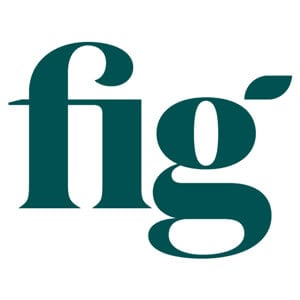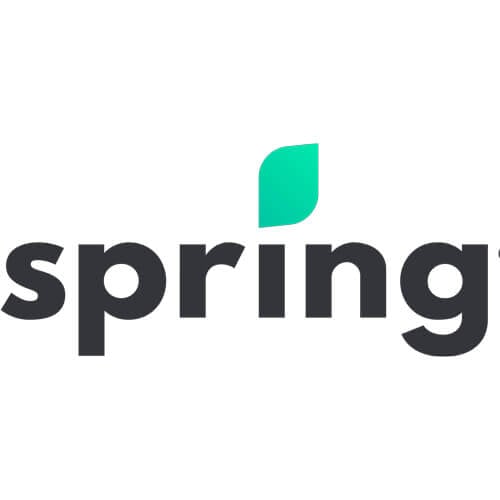How much debt is normal in Canada? We break it down by age
Do Canadians really owe $1.84 for every $1 they earn? For some, yes. And for others, even more. Where do you fit within the numbers?
Advertisement
Do Canadians really owe $1.84 for every $1 they earn? For some, yes. And for others, even more. Where do you fit within the numbers?

Debt seems to be a normal thing for Canadians these days. After a brief decline during the pandemic, the Canadian household debt-to-income ratio soared to 184.5% in the first quarter of 2023. That means Canadians owe nearly $1.85 for every dollar of disposable income. And an RBC poll found that the Canadians between the ages of 35 and 44 carrying debt had a total debt-to-disposable income ratio of 250% in 2019. And indebted Canadian millennials (under age 35) had debt loads worth 165% of their disposable income.
In under 60 seconds, get matched with a personalized list of loan providers based on your needs and approval likelihood. No SIN required.
The ballooning debt has been mainly driven by rising mortgage balances as demand pushed home prices to record levels across the country.
Does this mean the average Canadian is up to their eyeballs in debt? Not necessarily.
Let’s start by looking at the average consumer balance held across different credit products. This information comes from TransUnion’s Q1 2023 Credit Industry Insights report.
| Debt type | Average owed |
|---|---|
| Credit cards | $3,909 |
| Installment loans | $20,845 |
| Auto loans | $26,494 |
| Lines of credit | $34,328 |
| Mortgages | $349,178 |
Note, the numbers here represent the average consumer that carries a balance in these categories. For example, many people don’t carry a credit card balance but, for those who do, their average balance is $3,909. And then when you look at average owed on mortgages and compare it to the benchmark price of a house in Canada at $717,000, you see that the average mortgage debt is about half of a typical home’s sale value. (The mortgage debt and home benchmark prices are not from the same source, but you get the picture.)

Apply for a personal loan with a 8.99% to 29.49% APR. Plus, 100% online application and no early repayment fees.

Apply for a personal loan with a 9.99% to 34.95% APR. Plus, fast e-transfers and no hit to your credit score when you apply.

Pre-qualify instantly to borrow up to $35,000, with rates from 8.99%
As a fee-for-service planner, I work with clients at every age and stage of life, from Gen Z to baby boomers. While it’s true that no one individual represents an average, I do see themes around the type and amount of debt that each generation carries.
I’ll contrast that with data from a recent Globe & Mail survey on average household debt by generation.
In general, younger Canadians tend to be more heavily indebted, with overall household debt peaking in their 40s before declining sharply into their 50s and beyond.
Indeed, it would not be uncommon to see a debt-to-household income ratio of 400% (or $4 owing for every $1 in disposable income) for a 26-year-old couple earning a combined $125,000 after-taxes who bought a house and carry a $500,000 mortgage.
On the flip side, a 58-year-old couple with a combined after-tax income of $250,000 who have an outstanding mortgage balance of just $50,000 have a debt-to-household income ratio of just 20% (or $0.20 owing for every $1 in disposable income).
Let’s dive into the age groups and the sources of debt for each.
Gen Z is most likely to carry student loans and credit card balances, but older Gen Z and young Millennials are also dipping their toes into the housing market and taking on big mortgages as first-time buyers.
According to the survey, just over 28% of respondents in this age category had a mortgage and, of those, the average balanced owed was $475,318.
Of the respondents in this age category who carry credit card debt, the average balance was about $4,500.
Finally, 20-somethings who owed money on a home equity line of credit (HELOC) had an average balance of just over $55,000.
The 30-somethings I work with are likely to have a mortgage from a recent house purchase, along with debt from a line of credit and an auto loan (or two).
Respondents of the survey in this age category had a total debt load of about $644,000 between mortgages, HELOCs, credit cards and student loans.
Mortgages were the largest debt culprit, with an average mortgage balance of just over $500,000 for those in their 30s. Of note, 71% of 30- to 39-year-old respondents had a mortgage balance.
Thirty-somethings who carry a credit card balance on average owed about $6,200 on their cards.
Forty-somethings tend to have large mortgage balances and lines of credit, but they also have a lot going for them: They have higher incomes and have moved beyond the expensive child-care years (on average).
Survey respondents in this age category were the most heavily indebted, with nearly $648,000 in total debt.
HELOCs played a big role, with the average balance exceeding $102,000 for those who have drawn on their lines of credit.
Your 50s are a time to rapidly pay down debt and ramp up savings for retirement. Indeed, most 50-somethings I work with have established good savings habits and built up their retirement accounts while paying down their mortgage balance.
The survey found that the average 50- to 59-year-old who carries a mortgage owed about $367,000, while total debt was about $566,000.
Most people should strive to be mortgage free in retirement, but it’s becoming more common for retirees to carry a mortgage balance.
Indeed, the 60-somethings surveyed who still had a mortgage owed about $256,000, while their total debt load was still about $436,000.
Even Canadians aged 70 and older are carrying mortgage and line of credit debt. Of the 70-year-olds who responded to the survey, 11% still carried a mortgage balance and that average balance was still about $217,500.
Furthermore, 15% of those aged 70 and up carried a HELOC, with an average balance exceeding $124,000.
Debt in your 70s may be explained by the fact that retirees want to remain in their homes as long as possible. So, they are accessing funds through a line of credit or reverse mortgage may allow retirees to stay in their homes and enjoy a preferred standard of living.
Debt is on Canadians’ minds, but so is getting out of debt. A 2023 BDO survey shows: 56% of Canadians polled plan to cut back on non-essential spends (vacations, eating) to pay debt, 43% to hold back on essential spends (cloths, food, utilities), 26% to work more and 30% are overwhelmed and don’t know what to do.
But, ideally, Canadians will reach their peak debt years in their 30s when competing financial priorities are at their highest.
Prioritize getting out of debt by tackling the highest interest rate balances first to get the biggest bang for your buck—this is called the avalanche method. That means treating credit card debt and other high interest consumer loan debt like a “hair-on-fire” emergency and paying it off quickly.
After making a solemn vow to never pay another cent of credit card debt again, focus on lower interest debt such as your line of credit and mortgage.
HELOCs are insidious because they don’t require more than interest-only payments, so it’s easy to let the balance ride while paying the minimum. Resist the temptation and build a debt payoff plan that rids you of the HELOC balance within a reasonable three- to five-year time frame.
As for your mortgage, it’s fine to prioritize other financial goals like saving and investing at the expense of paying off your mortgage early. The goal for many Canadians is to at least align your mortgage amortization schedule with your retirement date—ideally a few years before to give you options to retire earlier or to catch up on retirement savings.
Remember, debt is a normal part of life for most Canadians—particularly those located in high cost of living areas of the country.
But no one is an average, so you may have higher than average debt-to-household-income in your 20s and 30s, average debt-to-household-income in your 40s and 50s and be debt free in your 60s and beyond.
The key is not to overextend yourself trying to prioritize everything at once. Avoid lingering credit card debt by paying off your balance every month, pay off lines of credit in a reasonable time frame, and align your mortgage pay-off date with your retirement date to ensure you can retire comfortably—and debt-free.
Share this article Share on Facebook Share on Twitter Share on Linkedin Share on Reddit Share on Email
Canadians, especially young people must learn to be more disciplined when they intend to buy “stuff “ before they have earned and saved the money….!
Times are gone when their parents while growing up provide these children with all their wishes buying ongoing “stuff” which is not needed!
Everybody has to learn quickly how to become way more disciplined when it comes to spending hard earned money!
Your numbers are meaningless as you didn’t do the work to see percentages of people with no debt.
I agree with Hed Renwoeth. To calculate averages properly you need to include people without debt. The numbers cited are directionally interesting as a comparison tool but not the best benchmark. Figures are also from a Globe & Mail article whose survey was based on self-reporting, so not the best gauge.
As usual, a timely useful article to consider. Thank you.
I am 48…..no mortgage debt, no line of credit debt, no credit card debt….no debt whatsoever. I owe a new rental 4-plex which is completely paid for and is providing me a solid income. On top of all that I still have ~$550k to play with; currently generating me 6% on an high interest saving account. I live a simple life and travel full time in a Mercedes RV which is also paid in full. My entire life I always reinvested my money into myself, never into government and never into stock market; no need to be greedy.
We need to view stats based on median values and assets of not average age. 50% of Canadians based on incomes needs. Averages are inflated by high income earners 1 or 2 % of privileged population and not typical Canadians. Politicians and financial institutions continue to qualify Canadians based on distorted average incomes not 50% median perspectives.
Seniors for example really are in a position of living on Assets or savings. For example a reverse mortgage is not really debt but liquidation of assets in the same manner as selling the asset ( real estate) and living off the proceeds. It is their life accumulations of wealth and independence.
At age 81 there is really no other support.
Focus on self sufficiency throughout life to cope with ever changing life challenges. Single, marriage, children and career losses. Life style changes is not a matrix formula but living within your means based on needs.
All this debt for young people is 100% unavoidable as wages continue to fall behind the cost of living. Housing is a complete rip off. You’d be better to live in a motorhome in a parking lot. The truth is that our entire society is living on borrowed time. At some point this will come to an end and we could see another Great Depression. The only way to solve this is to either raise wages in all sectors or wait for people to go bankrupt and the markets crash.